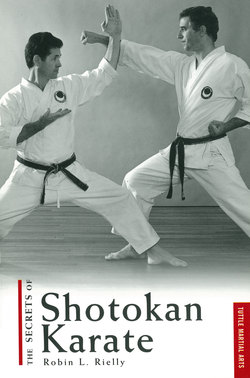Читать книгу Secrets of Shotokan Karate - Robin L. Rielly - Страница 7
ОглавлениеPreface
In the past two decades numerous karate training manuals have appeared in English, all attempting to achieve the same goal. That is, they strive to transmit to Western martial artists the principles so readily understood by their Eastern teachers. This is a difficult task. In past years, many of the Japanese instructors who came here found the language barrier a formidable obstacle as they attempted to spread their art to their American students. In many cases, students were lost as a result of this inability to communicate the essence of difficult physical and psychological principles.
Since the first Japanese instructors migrated to the United States to spread their art, enough time has passed to overcome this problem. In their four decades of instruction here, they have produced students who have an understanding of the art that they are attempting to spread. This is fortunate for present-day students of karate, who will find it much easier to learn the techniques and the principles behind them.
The genesis of this book springs from a desire on my part to assist my instructor in spreading the art of karate in the Western world. It has been my good fortune to have trained regularly with many top Japanese instructors over the last four decades. The most notable of them has been Master Teruyuki Okazaki, Chairman of the International Shotokan Karate Federation. It is primarily because of his teaching and influence that this work has been produced.
There is an additional concern relative to martial arts in America. As we survey the development of karate in this country, it becomes obvious that it has gone off track. Many individuals claim to hold extremely high rank in relatively new organizations. A cursory examination of their credentials, background, and training indicates that many are marginally qualified to teach the arts in which they claim mastery. Countless thousands of students pay tuition at their schools and adhere to their teachings, and in the end these students suffer from their instructors’ lack of knowledge. The traditional karate schools, by comparison, produce students with a solid knowledge of the techniques and principles described in this manual. Since these organizations are basically closed systems, the knowledge that their students have remains with them. It is my hope that this situation will open up so that all Americans practicing karate will be able to improve their techniques, regardless of style, system, or organization. Only in that way can America’s karate develop to its maximum.
Virtually all authors owe debts of gratitude for assistance in completing their work. I wish to thank my students and assistant instructors at the Kobukan Karate Club in Toms River, New Jersey, for their help in posing for the many photographs that illustrate this manual. Among them are: John Kandes, Tom Finnerty, Glenn Rosenthal, Joe Schoenig, Robert Todaro, and Ed Winters. Glenn Rosenthal and Clifford Day kindly consented to proofread the manuscript, and my wife, Lucille, assisted with the photography.
I am also indebted to the Philadelphia Museum of Art for the work of art from their collection, appearing on page 4.
In addition, Master Masatoshi Nakayama, Chief Instructor of the Japan Karate Association, kindly consented to allow the use of his calligraphy on pages 6 and 90.
